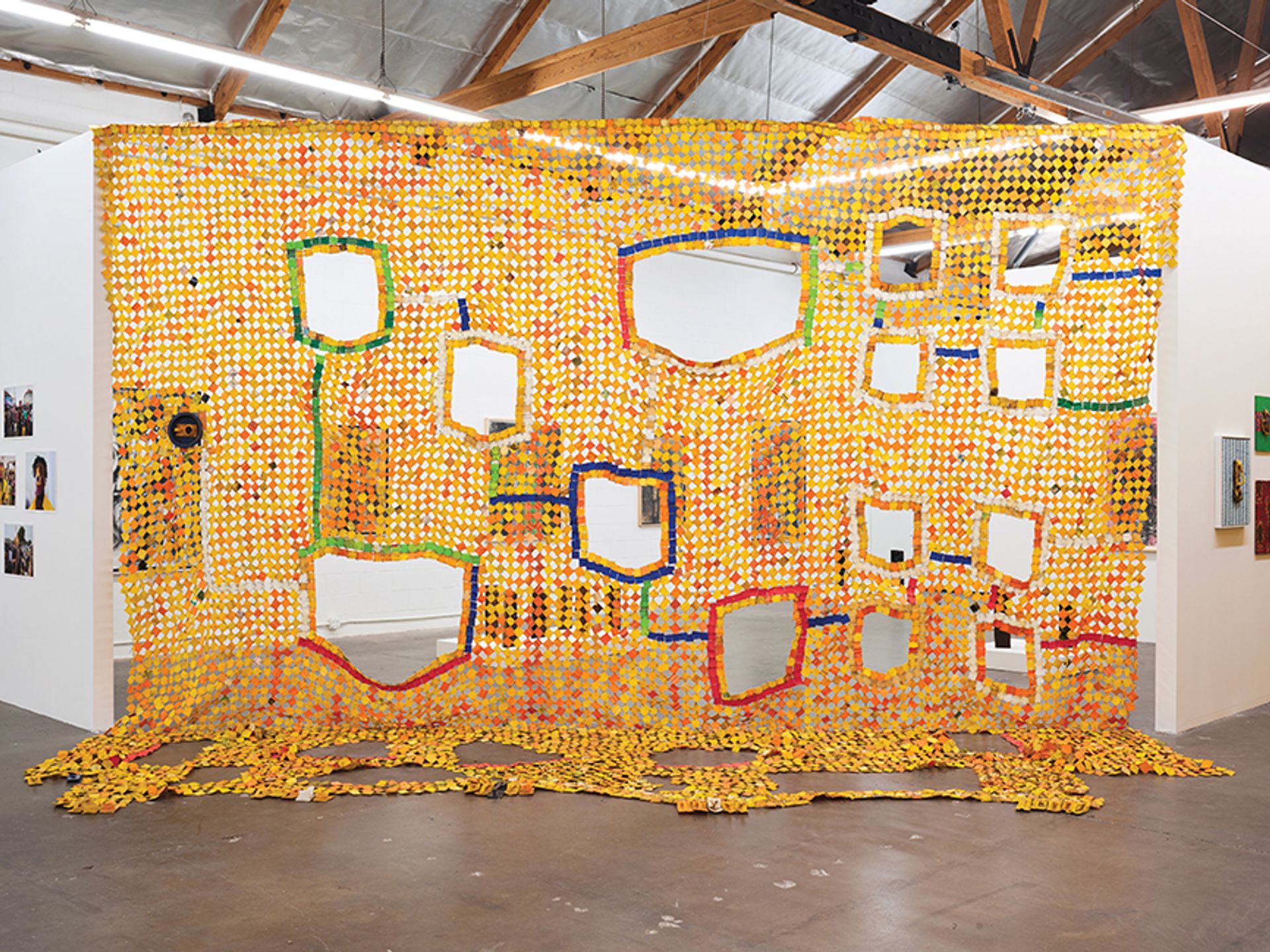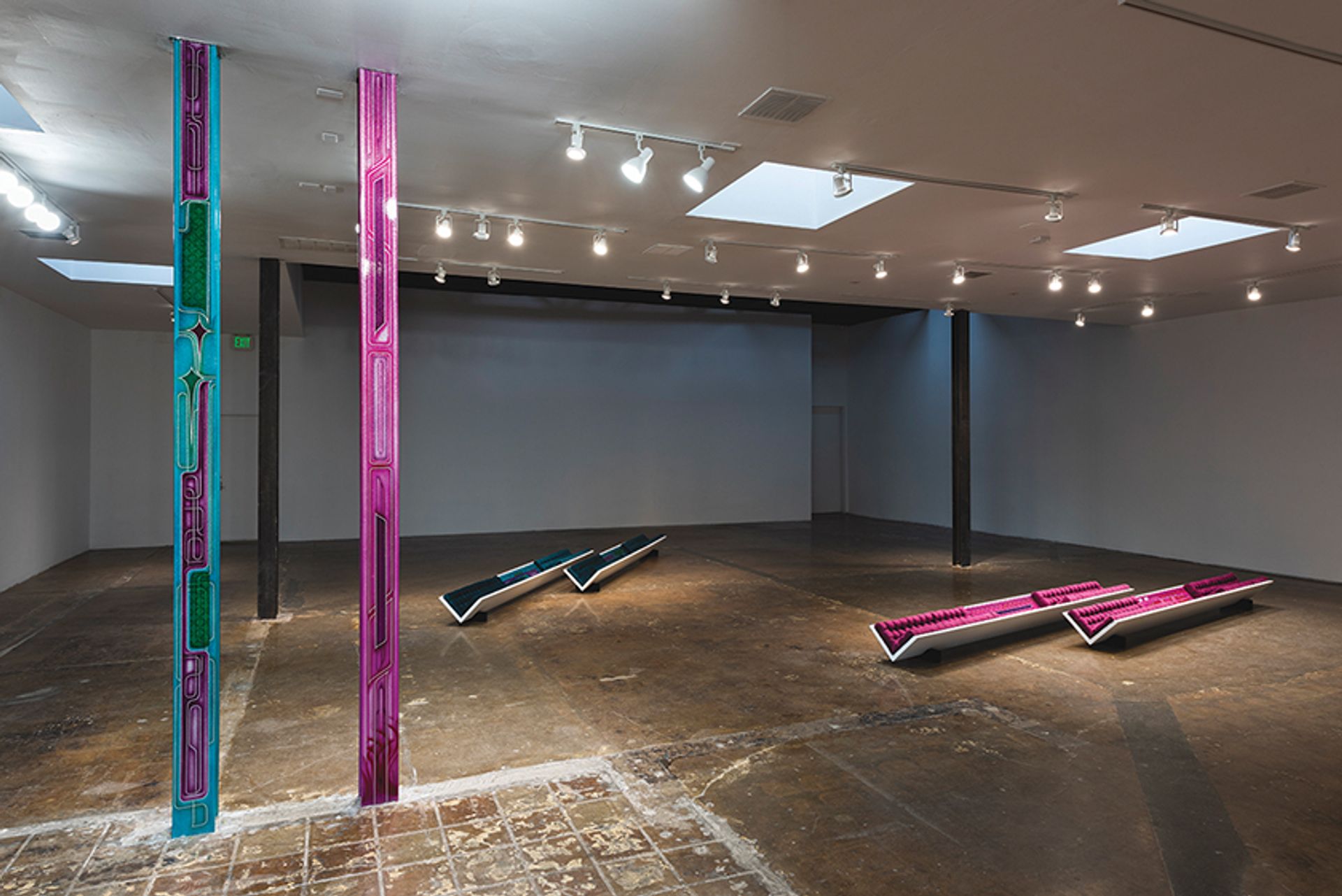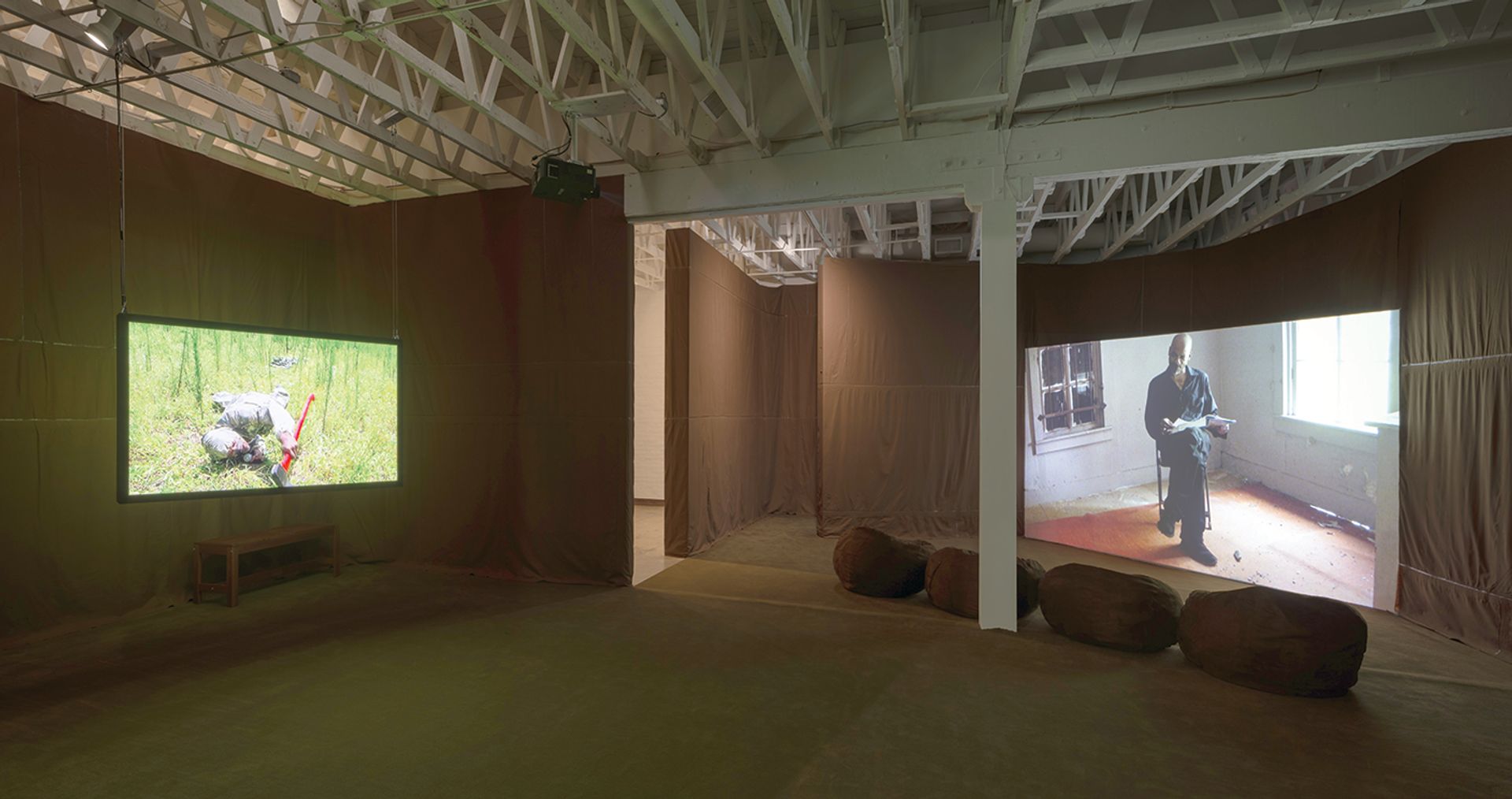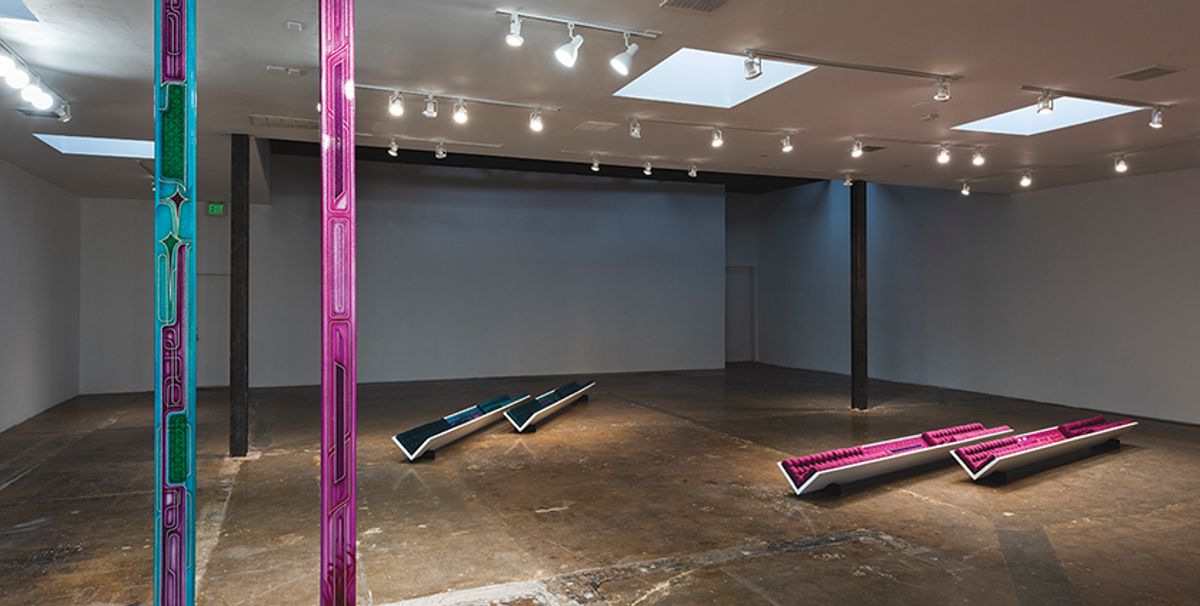
Serge Attukwei Clottey: Solo Chorus. Installation View at The Mistake Room, Los Angeles, CA, 2019. Photo Credit: Injinash Unshin, Courtesy of The Mistake Room
The Underground Museum in Los Angeles began this year with the kind of visitor feedback that most community- rooted arts organisations only dream about. A Yelp user who goes by the name “Nik D” wrote: “The Underground Museum is a Black person’s dream killer ration of all things melanin! It is also a great multicultural space for all things creative…Ultimately, it’s a great place to learn more about Black culture and the phenomenon of the Black experience.”
Co-founded in 2012 by the artists Noah and Karon Davis, The Underground opened at the site of a former Salvadoran pupuseria near the historically Black West Adams neighbourhood. In 2015, before Noah Davis died of cancer, it entered a partnership with the Museum of Contemporary Art (MoCA) to borrow pieces from its collection, and has since become a leading case study in how to create more access for more people to more art.
But it is far from the only non-profit alternative exhibition space in town with big ambitions to promote artists of colour, women and other historically underrepresented groups: LAXART (founded in 2005), The Mistake Room (2014), Art+Practice (2015), Joan (2015) and the ICA LA (the 2017 reincarnation of the Santa Monica Museum of Art) share this focus and are evolving in interesting ways to stand out in an increasingly crowded field.
“I think many of those spaces came up around the same time because of a need for more spaces for artists of colour in the city,” says Erin Christovale, the Hammer Museum curator who organised Art+Practice’s new show of work entirely by women of colour, including Adrian Piper, Lorraine O’Grady and Lynette Yiadom-Boakye, drawn from the philanthropist Eileen Harris Norton’s collection. Norton founded Art+Practice with the artist Mark Bradford and the activist Allan DiCastro, and the museum’s location in the African American hub of Leimert Park is a big part of its mission: offering free museum-curated exhibitions to the community as well as a work programme for youth in the foster care system.
“It’s extraordinary to see how many of these spaces opened in the last decade,” says Anne Ellegood, the new director of the ICA LA downtown, which is by many measures the biggest of the group. She said she was drawn to the institution because of its commitment to social justice and a mission statement that explicitly discusses “upending hierarchies associated with race, class, gender and culture”. She also points to the ICA’s strength in showcasing “important artists with substantial careers who deserve more visibility” from the New York-based queer artist Nayland Blake (which ran last year) to the late feminist artist Ree Morton (16 February-14 June).
LAXART, near the Hollywood gallery neighbourhood, currently has a show by the Indigenous anti-capitalist art-world darlings Postcommodity—one sign of its shift from mainly promoting emerging and mid-career artists based in Los Angeles to what its director Hamza Walker describes as a “broader” and “more open-ended” mission. And plans are under way for a 2021 show of decommissioned Confederate monuments that Walker will co-curate with the artist Kara Walker (no relation). “I’ve known Kara for a long time and said there’s a show that needs to be done,” he explains. Right now, they are in the process of sourcing decommissioned monuments from cities like Baltimore and Austin. “This is not a show about Confederate monuments but a show of Confederate monuments,”he says, adding that it will include “breakout moments where artists are invited to make a response.”

Installation view of Some Reach While Others Clap by Postcommodity, 2019. Courtesy of LAXART and Ruben Diaz
Just south of downtown, The Mistake Room is shifting focus from solo shows to big, debatable, ideas-driven surveys. Last year, its director César García organised with curators Nicolas Orozco-Valdivia and Kris Kuramitsu Where the Sea Remembers, a complicated and compelling next-generation survey of Vietnamese contemporary art. Next year will bring a group show of Russian contemporary artists who make visible the “invisible power structures behind the political curtain”. But first, in time for the US presidential election in November, García will present a show of US-based Latinx artists that reflects a wide range of viewpoints generationally and geographically—“fractured, not cohesive”, he says.
“I get punked around a lot by colleagues and artists who ask: ‘When are you going to do the big Latino show?’” García adds. The 2019 massacre at a Walmart store in El Paso, Texas, by a white nationalist who told police he was targeting “Mexicans”, gave him the impetus. “The shooting broke me. Policy or political decisions can be overturned; we can survive that. What’s most difficult for me is how the rhetoric of the last few years shapes the way brown people are seen. This show is my modest attempt to create a different picture.”
Originally, The Mistake Room’s mission was to create a platform for artists “who live outside the US”, giving the Guatemala-based artist Vivian Suter her first major show in the US, for example. But after a year of researching and visiting “every single damn space in town,” García realised he could fill a vacuum by doing more “idea-driven group exhibitions”, citing as inspiration MoCA’s 2004 show A Minimal Future? and the Studio Museum in Harlem’s Freestyle from 2001.
“We all need to find our niches because we’re not uber-grassroots spaces anymore,” he adds, noting that donors once tapped for $2,000 now might be asked for as much as $20,000. “And with Lacma rebuilding and the Hammer expanding, they’re taking up a lot of oxygen on the funding side, so it’s even more important for our space to have a very clear and specific mission.”

Rodney McMillian’s Brown: videos from The Black Show, which explores the legacy of slavery, is currently on show at The Underground Museum Photo: Zak Kelley; Courtesy of The Underground Museum
The Underground is also trying to mix things up, alternating between MoCA shows that Noah Davis outlined before his death and those originated by the current leadership, under the director Megan Steinman. “Noah created upwards of 18 exhibitions that are in various states of completion from MoCA’s collection; we’ve only done four so far,” Steinman explains. The current show features videos by Rodney McMillian exploring the legacy of slavery (until 16 February).
One trend is to hold longer and fewer exhibitions. The Mistake Room plans to go from four shows yearly to two or three, A+P is down to two, and the Underground will keep its show of Davis’s paintings—opening in March—up until the end of 2020. “Having shows up for a really long time allows us to organically develop our programming,” Steinman says.
Summer Guthery, who runs Joan, a smaller non-profit downtown, has also shifted from seven exhibitions a year to four or five, freeing up programming space and funding for more performances. “There’s something to be said for giving your audience enough time to come to the show,” Guthery says. “You can do more for the artist with that model: more promotion, more events.”


